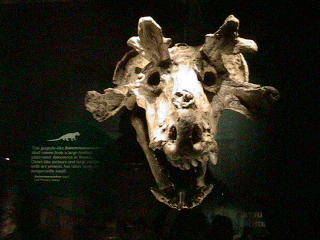John g,

Lubos had some claim about Martian ancestry, but we know that he
jests?:)
So I do not want to use up to much more of Lubos's blog for this conversation even though he pushes the envelope. Perhaps, you will start your own blog?
 Genuis at Work
Genuis at Work
(Picture credit: AIP Emilio Sergè Visual Archives)Lastly, I have know certain "
trademarks of people" like Dirac as "the geometer" is inherent at the foundations of such psychologies(even I like to dabble in model developement ex:
John Venn), with current information
Peter Woit brought forward, are key indicators to me of visualization capabilties that are every advanced for this abstract world.
Clifford demonstrates like a
Rorshach Ink blot as an experiment, with the picture on that "blackboard"?
Wassily KadinskyHis art and in composition? As a reference made in the comment section of another artist in realtion to Clifford's article, Wassily came to mind.
The term "Composition" can imply a metaphor with music. Kandinsky was fascinated by music's emotional power. Because music expresses itself through sound and time, it allows the listener a freedom of imagination, interpretation, and emotional response that is not based on the literal or the descriptive, but rather on the abstract quality that painting, still dependent on representing the visible world, could not provide.
How would it be possible to extend let's say the idealization to a history of geometries without establishing this basis in thought? There had to be expanded frontiers that would let people develope towards objective goals in science, based on science and herein lies the difficulites with the INKBLOt. As by subjective interpretaion based on current knowledge bases, these views would be very much different then what someone "well trained might see"? Let alone, classify it to any geometric formulation.

Surely inkblot below is a mask? I have one in relation, drawn from the antiquities of evolution. If you ever visit the
Drumheller museum, in Alberta Canada, you'll identify it for sure?:) So what is this "projection" based on?
 Keep it simple
Keep it simpleI like to keep it simple, and fragmentary indications of my blog entries can be accumulative of something deeper and very revealing about such a nature of these geometers I like to talk about. I had to learn this history in order to understand where we had been taken with Einstein's General Relativity. Another one, who understood after Grossman that such geoemters were needed to bring consistancy to the undertanding of theoretical developement.
I would not have gotten this far without bloggists, like Lubos, Peter, Sean, Clifford, Mark and the rest of the Cosmic Variance group, who are most kind in helping us lay people to recognize issues in ways and helping to develope info according to the academic world. This has been truly a grace.
Entries of my own, would have past as incoherent states of unfamiliar words, on a very simple level dealing with the societal world we live in. I now find comfort, that I am not so strange, in this geometer sense.
Have I excelled myself? On the contrary, its about learning about ourselves and who we are, is all. If it past the stage of pure mathematics( towards that center), then why would we not see that this outward development had some psychological model in which to adorn oneself in this mandalic sense.
Sean, makes
brief link entree in that blog of Cliffords on Cosmic Variance.
Indeed, this is where such models helped me understand from a Jungian sense, that such a map had to exist, and models built. This can only come from experience, and from the direction of coming from that center. Why I ask Lubos, or anyone for that matter, about where ideas come from. Here you would see such a flavour and distinction in Plato's ideology, about what could manifest in any mind, and not just any one select part of this society.
No doubt, that like any fisherman's hook, you would need to have some valuation and inclination to manifest. As you develope through any model apprehension, where you could add more ideas to the pot. For a further invitation for probilities to manifest in our everyday conversations. Are some of these "inductions and deductions" always right? Of course not, and this is where our education comes in, and the saving grace of bloggists in general.
Who would of thought by using "internet world" the bloggists could have ever reached the "periphery" of this society? I'll intoduce you to another foreigner whose concept defintiely challenges the mind in this bubble sense. In a way I helped him to develope further, and him, I.



